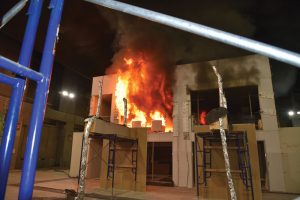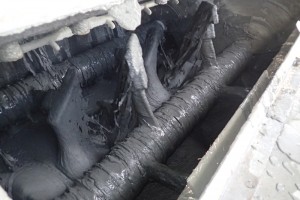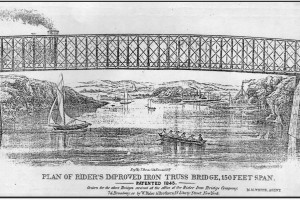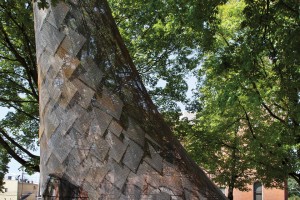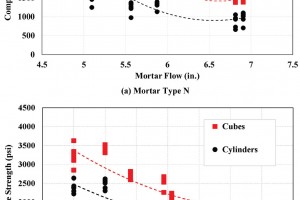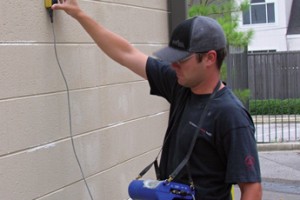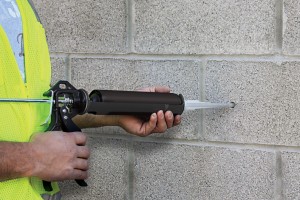Structural Engineering is a great profession. Every day structural engineers engage in something new, making visions into reality, visions often created by talented people many of whom are architects. Their contribution to society, while mostly hidden from the general public, cannot be discounted. Seldom do their structures fail. It is a great profession. …
Review Category : Articles
Historic Action by ICC Follows Ad Hoc Committee Recommendations
The 2021 International Building Code (IBC) will introduce three new types of construction for fire-resistance-rated mass timber structures, the first significant addition to the types of construction in many years. Although still considered combustible construction, the structural frames of these buildings are designed for integrity in the unlikely event of fire exposure. …
Ultra-high-performance concrete (UHPC) is an emerging class of concrete characterized by ultra-high compressive strength, significant post-cracking ductility, and exceptional durability compared to conventional concrete. UHPC is usually distinguished from conventional or high-performance concrete based on its compressive strength, which can range from a minimum of 17,000 psi to more than 30,000 psi. In addition, it also often exhibits post-cracking tensile strengths over 1,000 psi, a more than ten-fold decrease in chloride diffusion rates compared to conventional concrete, and essentially no susceptibility to deterioration by freezing and thawing (Russell & Graybeal, 2013). Most UHPC is also self-consolidating. …
This is the first in a series of articles on bridge failures in the United States. While failures are always newsworthy, especially if there is a loss of life, they are also lessons for bridge engineers to learn from. Failures, while traumatic, can be good teachers. Over the coming issues, this series will describe 20 failures, some of which you may have heard of. The earliest failure was in 1850 and the most recent in 1987. …
Columbus, IN, located about 45 minutes south of Indianapolis, is home to a surprising amount of pioneering architecture given its modest population of 50,000. The city has added so much to the industry that the American Institute of Architects has named it sixth in the country for contributing to architectural innovation and design. The Exhibit Columbus festival celebrates the city’s design heritage each year by presenting current art and architecture. Wiikiaami, presented at the 2017 exhibit, is a steel art structure with an asymmetric, conical shape inspired by the homes of the Myaamia people indigenous to Indiana. …
Have you been recently promoted to a leadership position? Congratulation on a great accomplishment! With a new leadership position comes greater responsibility and the opportunity to grow in ways that you cannot even imagine. This article covers five key points to navigate going from “peer” to “manager” to help you prepare for the transition. …
“What’s the Plan?” ~Anonymous
“Make no small plans; they have no magic to stir men’s blood.” ~Daniel Burnham
“Plan the work and work the plan.” ~Jeff McCarthy, former Skidmore, Owings & Merrill LLP (SOM) Managing Partner
“Plans are of little importance, but planning is essential.” ~Winston Churchill …
Mortar is specified by proportions or by properties. The proportion method is simply a mortar recipe or certain volumes of cementitious materials and aggregate combined with water that gives a workable mix. Experience shows that if a specified recipe is followed, mortar with certain performance characteristics is consistently obtained. Sampling, testing, or measurement of properties in the laboratory or in the field is not required of a proportion-specified mortar. …
Nondestructive Evaluation Methods
Reinforced masonry is used throughout the United States as a cost-effective and desirable building form for commercial, residential, institutional, and industrial construction. Reinforced masonry is a form of composite construction where the masonry units resist compressive stress and internal reinforcement resists tensile stress developing primarily from flexure and shear actions. …
Practical Installation Considerations
The use of adhesive anchors is a common method of forming attachments in both existing concrete and masonry base materials. They are widely used for structural connections, including steel reinforcement embedments, mounting non-structural components, equipment anchorage, and other miscellaneous hardware. The popularity of adhesive anchors in construction practice necessitates an opportunity to discuss, encourage, and promote good installation practice when these products are utilized. …

